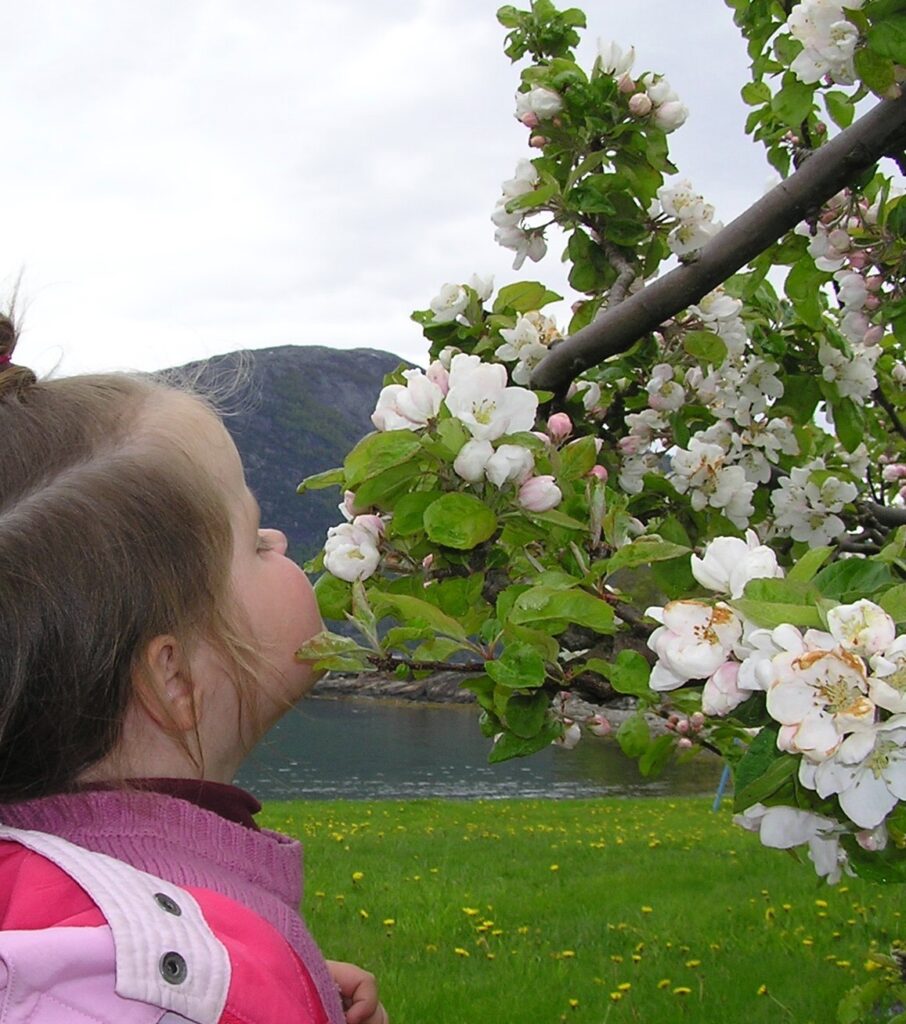
I associate Hardanger with fruit flowering in spring,
– idyllic fjord villages and beautiful scenery.
My daughter had her first trip to Hardanger at the age of 6 weeks – and that was my first trip to Hardanger in springtime. Since then, there have been many trips – to enjoy the beautiful fruit blossoming and the fascinating Hardanger landscape.
My daughter (4 years old ) at Lothe, May 2006
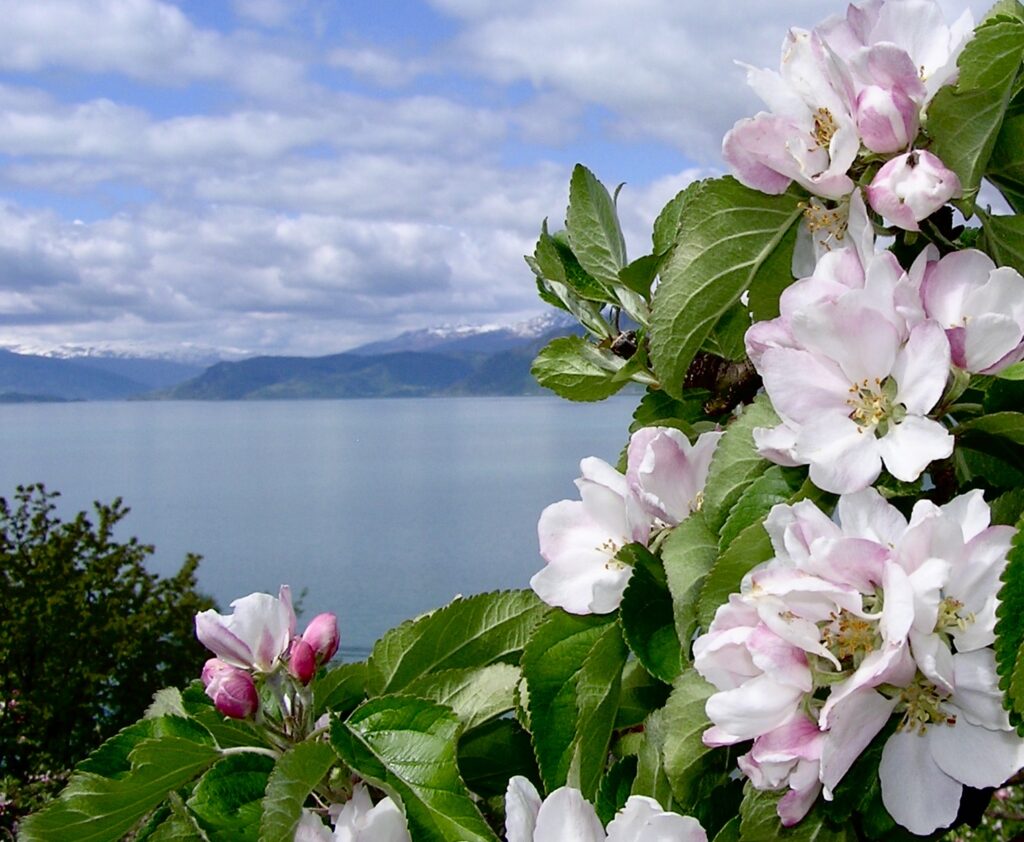
Hardanger is a district in the county of Vestland and consists of 4 municipalities: Ullesvang, Eidfjord, Ulvik and Kvam.
The scenic Hardangerfjorden dominates the region.
This fjord splits into many smaller branches, like Sørfjorden, which is the most extended arm.
Hardangerfjorden is the second-longest fjord in Norway — and third, in the world- stretching 179 km (111 mi) inland from the Atlantic to the town of Odda.
EARLY TOURISM
In the 1800s, tourist travel in western Norway experienced its significant breakthrough with the regularly scheduled steamship traffic. The region’s spectacular nature, glaciers, and grand waterfalls thrilled many travellers.
- In 1853 the route between Hamburg and Bergen opened and from 1861 tourists and other travellers could take the steamship further up the fjord to Hardanger.
- One of the world’s first tour operators, Thomas Cook, offered cruises from London to Hardangerfjorden as far back as 1875.
- Kaiser Wilhelm II, the last German Emperor and King of Prussia, was also a great fan of Norway. In 1888 he was at an art exhibition in Berlin and became so fascinated by some pictures of Digermulen in Lofoten that he decided to travel there and see if the place really was so beautiful. In July 1889 he departed for a 20-day vacation to Norway with his beloved, 120 metres long imperial yacht the Hohenzollern II. His first stop was in Hardanger. After this successfull trip he became a frequent traveller to Hardanger and also other parts of Norway in the period of 1889-1914.
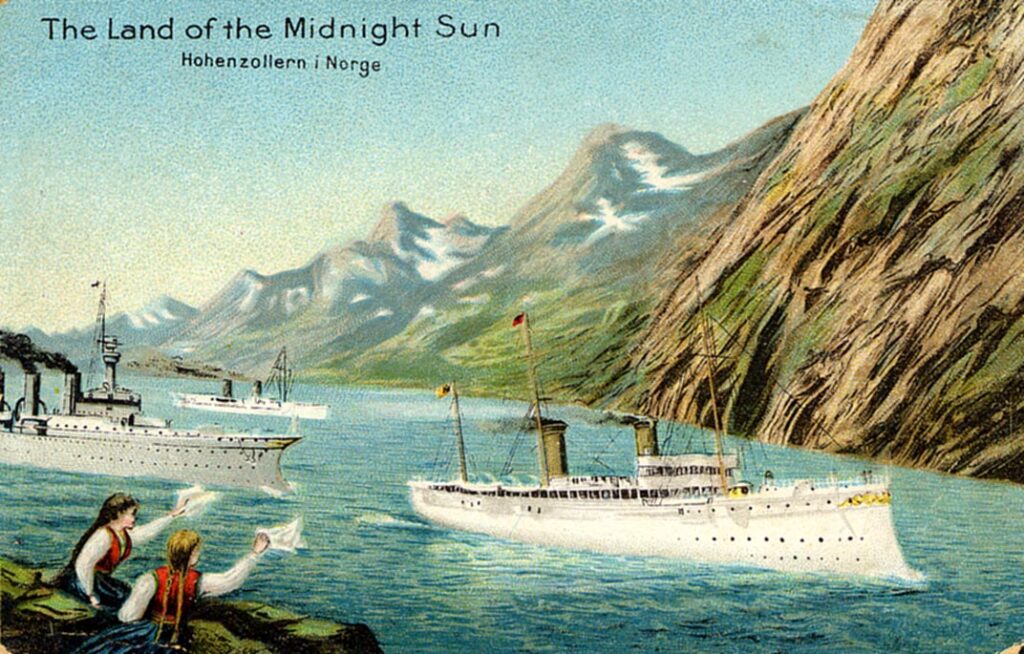
Most of the early tourists were Englishmen and rich folk, but the flow of tourists gradually lost its aristocratic stamp. At the end of the 19th century, the middle classes were in the majority; employees from the coal-fired cities of England and the Continent travelled on overseas holidays.
FRUIT PRODUCTION
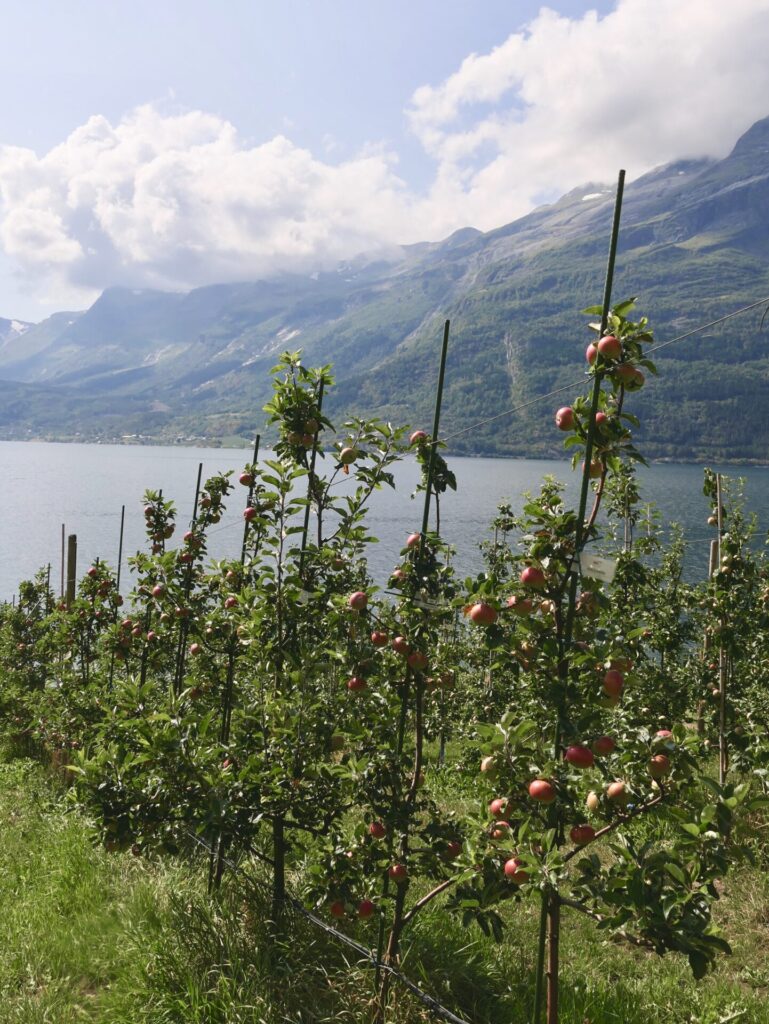
For centuries Hardanger has been the centre of fruit production, and here you will find some of the largest fruit villages in Norway. The valleys of Hardangerfjorden yields tons of strawberries, raspberries, plums, cherries and, most famously, apples each year.
Apples have been cultivated in Hardanger since the 14th century, the agricultural experience brought by English monks who first arrived at Lyse Abbey in 1146. The climate, soil and seasonal conditions of the region are particularly favourable to the growth of apples.
Hardanger cider has in recent years become very popular. The quality and standard have reached new heights, and the product has won multiple awards both nationally and internationally. “Cider from Hardanger” or “Hardangersider” is a protected origin name, just like Champagne.
The cider, which is fermented from apple juice, is characterized by its light, sour and aromatic apple taste.
More than 50 farmers belong to the local cider guild, and many offer tastings and tours.
NATIONAL PARKS
Norway’s third largest glacier – Folgefonna – looms over Hardangerfjorden in Folgefonna National Park. Folgefonna National Park was established in 2005 for protecting the glaciers and the surrounding areas.
Hardangervidda is Northern Europe’s most extensive mountain plateau. Hardanger National Park is a protected part of Hardangervidda, and it is Norway’s largest national park. Here you will find lakes and rivers, which, draining westward, drop in huge waterfalls such as the Vøringsfossen. It is also home to an essential stock of wild reindeer.
TWO NORWEGIAN SCENIC ROUTES
Travel along the scenic routes in HARDANGER- and be enthralled by the region’s beautiful fjords, picturesque landscape of small villages with orchards, lush hillsides, mountains, glaciers and waterfalls.
The Norwegian Public Roads Administration (NPRA), responsible for developing Norwegian Scenic Routes, has provided breathtaking viewpoints, art installations, and resting areas with artistic, modern toilets.
I will show the routes in my way with my pictures and information along the route. I have included the main attractions in the areas, such as the national parks, historic buildings, especially historic hotels, and some of the main activities and attractions such as Trolltungen(“Troll tongue”).
I have included some byways, places off the route itself, which are worth a visit.
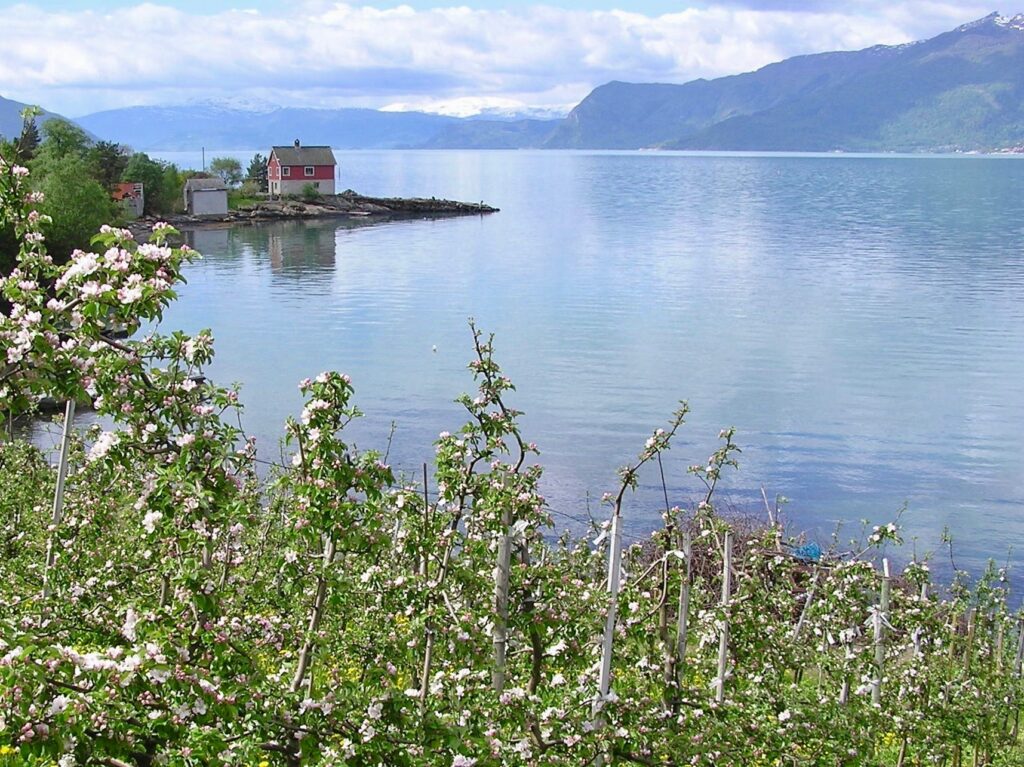
There are two Norwegian Scenic Routes in Hardanger:
- Hardanger – described in 3 sections
- Hardangervidda
THE NORWEGIAN SCENIC ROUTE – HARDANGER
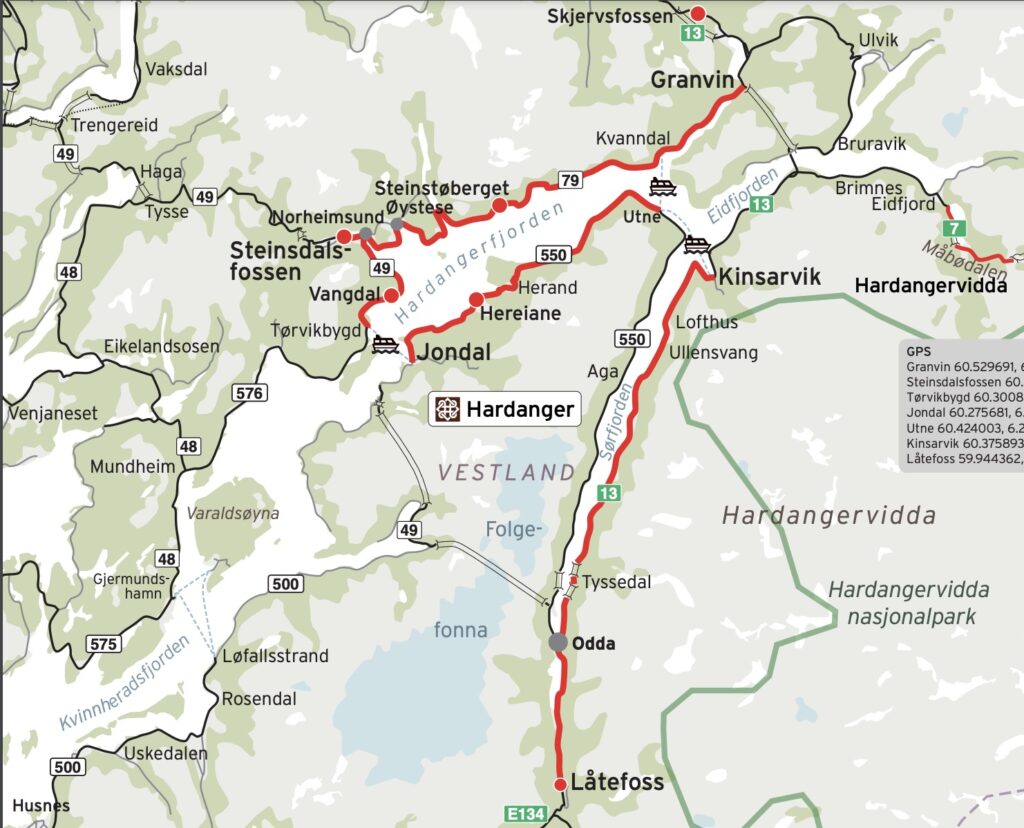
The Norwegian Scenic Route – Hardanger – follows three road sections which cover the east side of the Sørfjorden; from Låtefoss to Kinsarvik (Rv13)
and the north and south sides of Hardangerfjorden ;
from Granvin to Tørvikbygd (Fv7) and Jondal to Utne (Fv520)
I started in Låtefoss, south of Odda, and will cover the route in 3 parts:
GRANVIN – STEINDALSFOSSEN- NORHEIMSBYGD-TØRVIKBYGD
THE NORWEGIAN SCENIC ROUTE – HARDANGERVIDDA
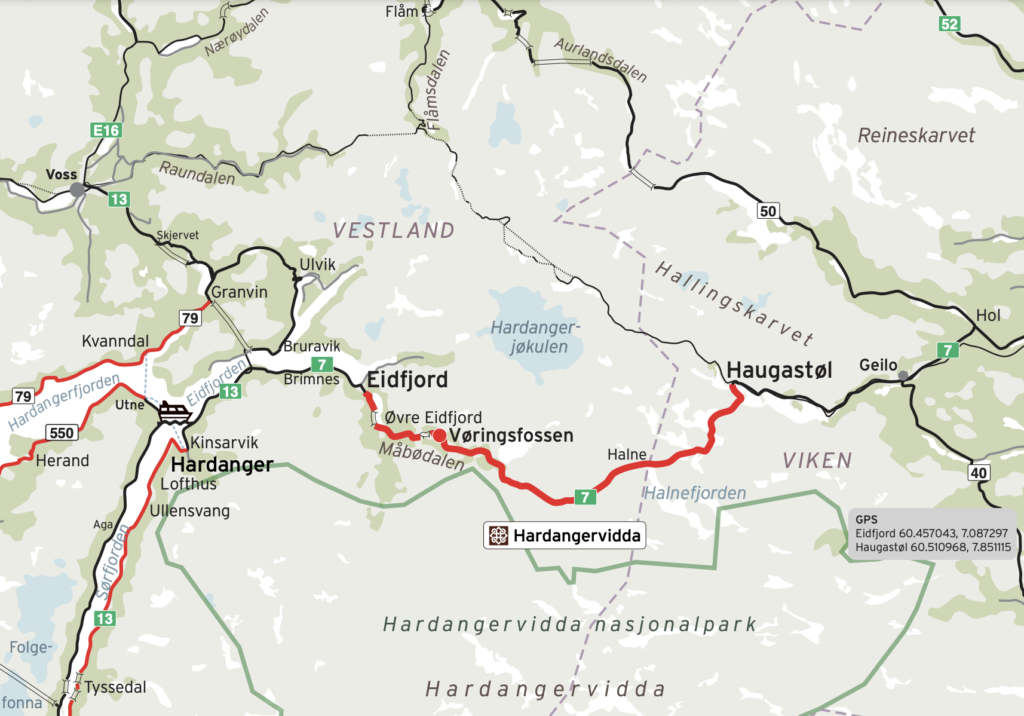
Norwegian Scenic Route – Hardangervidda – runs from Eidfjord by the fjord – to Haugastøl at the high mountain plateau Hardangervidda. It follows the national road Rv7 and has a total distance of 67 km.

